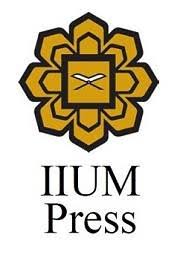THE PROPHET YŪSUF (AS): THE ARCHETYPE OF CHASTITY
DOI:
https://doi.org/10.31436/alburhn.v6i3.278Keywords:
Prophet Yūsuf, the Archetype, Chastity, YouthAbstract
When Prophet Muḥammad (PBUH) was asked about the noblest person on earth, he responded: “The noble, son of the noble, son of the noble, son of the noble, Yūsuf bin Yaʿqūb bin Isḥāq bin Ibrāhīm.” Born into a house of prophets and messengers—Yūsuf (AS) was destined to carry on the blessed legacy of his noble forefathers. Unlike any other sūrah in the Qurʾān, Sūrah Yūsuf contains the longest sustained story revolving around one personality—Yūsuf (AS). Stories of prophets and messengers are found throughout the Qurʾān, but the story Yūsuf (AS) is concentrated entirely in this sūrah. In addition, the story is presented in a chronological manner highlighting major events in Yūsuf’s (AS) life—from youthhood to prophethood to government. It is important to note that the sūrah contains timeless lessons for all age groups and dynamics. The research presents Yūsuf (AS) as the archetype of chastity and further presents practical lessons for contemporary youth from his noble example.
Downloads
References
Al-Bukhārī, Muḥammad ibn Ismāʿīl. (1997). Ṣaḥīḥ al-Bukhārī. (M. M. Khan, Trans.). Riyadh: Makataba Dar-us-Salam.
Al-Būṭī, Muḥammad Saʿīd Ramaḍān. (2007). The Jurisprudence of the Prophetic Biography, trans. Nancy Roberts. Damascus: Dār al-Fikr.
Darāz, Muḥammad ʿAbdullāh. (2001). The Qurʾān: An Eternal Challenge, (Adil Salahi, Trans.). Leicester: The Islamic Foundation.
Ghamidi, Javed Ahmad. (2014). Islam: A Comprehensive Introduction (S. Saleem, Trans.). Lahore: Al-Mawrid.
Ḥusayn al-ʿAwāyish. (2004). Governing Yourself and Your Family. Birmingham: Al-Hidaayah Publishing and Distribution.
Ibn Kathīr, Abu al-Fidāʾ Ismāʿīl. (2003). Tafsir Ibn Kathir. (N. Al-Khaṭṭāb, Trans.). Riyadh: Makataba Dar-us-Salam.
Ibn Kathīr, Abu al-Fidāʾ Ismāʿīl. (2003). Stories of the Prophets. (R. A. Azami, Trans.). Riyadh: Makataba Dar-us-Salam.
Ibn Taymiyah, Taqī al-Dīn Aḥmad ibn ʿAbd al-Ḥalīm. (2006). Diseases of the Hearts and their Cures. (A. Rumaysah, Trans.). Birmingham: Daar us-Sunnah Publishers.
Mawdudi, Sayyid Abul Aʿla. (2004). Towards Understanding the Qurʾān. (Z. I. Ansari, Trans.). Leicester: The Islamic Foundation.
Muslim Ibn al-Ḥajjāj. (2007). Ṣaḥīḥ Muslim. (N. Al-Khattab, Trans.). Riyadh: Makataba Dar-us-Salam.
Nadwī, Abul Ḥasan ʿAlī. (2011). The Four Pillars of Islam. (Mohammad Asif Kidwai. Trans.). Petaling Jaya: Islamic Book Trust.
Saeed, Mahmood Shakir. (1997). A Model for a Muslim Youth in the Story of Yūsuf (AS). (K. I. Al-Dossary, Trans.). Riyadh: World Assembly of Muslim Youth.
Shafi, Muhammad. (2010). Maʿāriful Qurʾān. (M. Shamim, Trans.). New Delhi: Farid Book Depot.
Al-Ṭabarī, Abū Jaʿfar Muḥammad ibn Jarīr. (2001). Jāmiʿ al-Bayān ʿan Taʾwīl Āy al-Qurʾān. Cairo: Dār Hajr.
Downloads
Published
How to Cite
Issue
Section
License
In general, reusing or reproducing substantial portions of al-Burhān content requires permission. This includes the use of text, figures, tables, multimedia content, and any other material published in any issues of al-Burhān Journal of Qur'an and Sunnah Studies. For some instances, al-Burhān may make its content freely viewable; however, such material may require permission for reuse. To seek permission, please contact the editorial.









